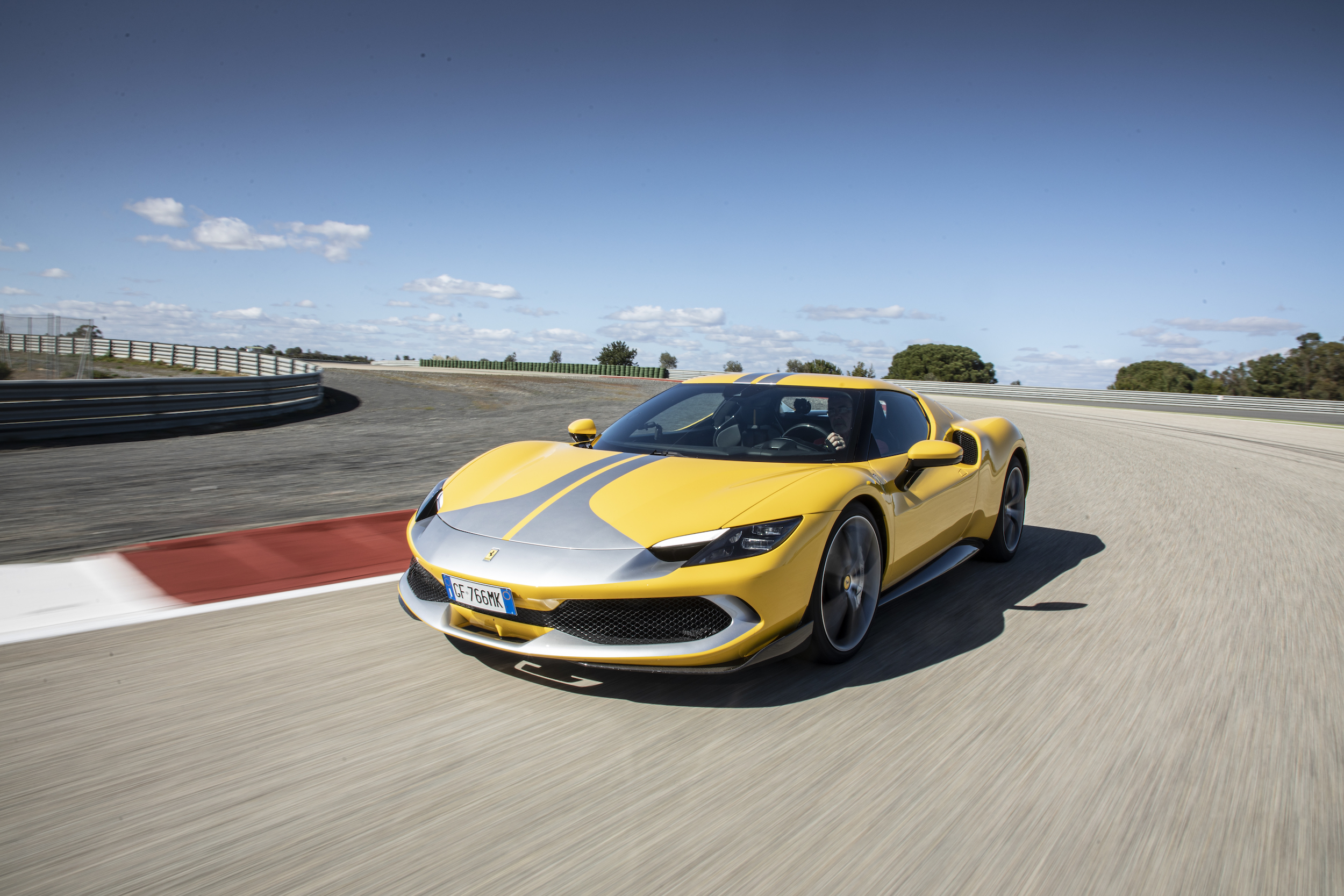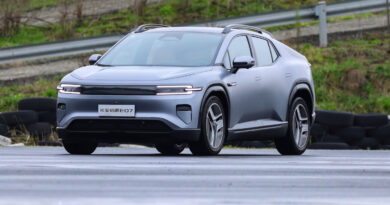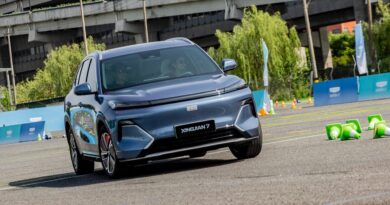Driven: 2022 Ferrari 296 GTB
There’s PHEVolution in the air at Ferrari. The new 296 GTB isn’t just another sensational sports car from Maranello; it also points to plug-in hybrid tech playing a big role in the revered brand’s future.
In the engine compartment of the 296 GTB is a new twin-turbo 3.0-litre V6 and a single electric motor. Their combined maximum power output is higher than any twin-turbo 3.9-litre V8 or non-turbo 6.5-litre V12 Ferrari currently produces.
The maximum combined power output of the 296 GTB’s propulsion system is 610kW. This is 80kW more than the V8 of the F8 Tributo and 22kW more than the V12 of the 812.
Ferrari’s PHEV philosophy prioritises the pursuit of power over efficiency, and the 296 GTB seems purpose-designed to showcase its potential. Compared with the F8 Tributo, the new PHEV has a shorter wheelbase, is slightly smaller overall, and weighs a little less. All this is enabled by the more compact powertrain.
The challenge for Maranello’s engineers was to turn theoretical advantages into driving reality. The objective? Create a mid-engined and rear-drive Ferrari that was more nimble and fun to drive than the F8 Tributo.

They nailed it. The 296 GTB is ferociously fast and awesomely agile, but Ferrari’s mastery of electronic control systems makes its stellar limits approachable. It’s a remarkably easy car to drive very quickly.
The power delivery of the PHEV is a little different, but not in the way you might expect. It’s got even more bottom-end wallop than the V8. This is where the boost of the e-motor is most noticeable. And it adds more than just a heaping helping of torque. The e-motor also sharpens throttle responsiveness.
The 296 GTB looks good, too. The exterior style echoes the famed 250 LM of the 1960s, especially from the rear three-quarter view, but there’s nothing nostalgic about the car’s downforce-generating aerodynamics and cunning cooling solutions.
And the sound its ICE makes is glorious. It hits spine-tingling trebles on the way to the cutout. It’s a sound Ferraristi should get used to…
Though Ferrari guards its model plans very closely, a drivetrain engineer at the 296 GTB launch hints that the electrified V6 is already earmarked for other projects.
“This kind of engine is very versatile,” senior engine development engineer Emanuele Fresia, who worked on the V6, tells me. He doesn’t wink, but I get the picture.
So let’s take an in-depth look at what goes into this important new Ferrari powertrain…
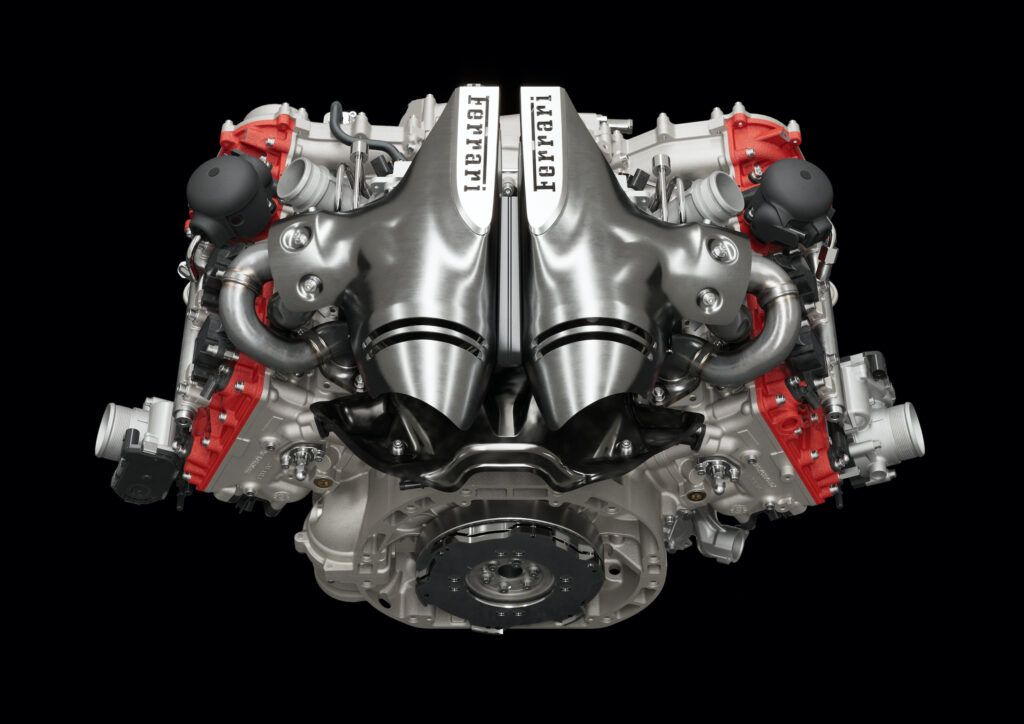
All new V6
Ferrari insists the 296 GTB is its first-ever V6 car. The V6-powered 206 and 246 models from the ’60s and ’70s don’t count, they say, because they wore Dino badges, not the prancing horse.
Codenamed F163, the most unusual thing about the new 3.0-litre V6 is its 120-degree V angle. Most V6s have a 60- or 90-degree angle between their cylinder banks.
The 120-degree angle does a number of things. It reduces the engine’s overall height, gives evenly spaced cylinder firing intervals – the key to the F163’s musical sound, say the engineers – and it leaves plenty of space on top of the engine for a pair of contra-rotating turbochargers.
This makes it Ferrari’s first ‘hot-V’ road car engine, the layout favoured by most German manufacturers of high-performance V6 and V8 engines. A bonus is that the route for the dual exhausts to the single central outlet in the 296 GTB’s tail is very direct.
The V6’s inlet manifolds are hidden away beneath the widely splayed cylinder heads. Just as well; heavily ribbed for strength, they’re made from lightweight but ugly black plastic.
Other features are fairly standard Ferrari practice. The F163 is a dry-sump engine, with double overhead cams and high-pressure fuel injection. It can spin to 8500rpm
Still, the maximum outputs of the F163 are pretty impressive, even by Maranello’s elevated standards; 488kW and 740Nm.

Axial-flux e-motor boosted
Outputs for 296 GTB’s e-motor are 122kW and 315Nm. These figures alone would make a small EV a reasonably snappy performer. Working with the F163, the e-motor ups the maximum power of the Ferrari PHEV powertrain to 610kW at 8000rpm.
The motor is an axial-flux design, with a single stator and dual rotors. It’s “derived from the Formula 1 application” Ferrari says, and shares its MGU-K (for motor generator unit, kinetic) label.
It’s large in diameter, but slim compared to the radial-flux motors used in the vast majority of EVs in production today. “We call it the pizza,” jokes a Ferrari engineer at the launch of the 296 GTB. For English-speakers it’s a “pancake” instead.
The e-motor is manufactured by Brit outfit Yasa, acquired by last year by Mercedes-Benz. Yasa also supplies Ferrari with one of the three e-motors in the SF90 Stradale. The change in ownership won’t affect the relationship, according to Ferrari.
Though the e-motors used in both 296 GTB and SF90 Stradale are similar in size, there are important differences. The maximum torque output of the 296 GTB motor is higher, so it requires an inverter that can handle higher current.
Another big difference is that there’s a triple-plate dry clutch between the 296 GTB’s V6 and e-motor. The SF90 Stradale doesn’t have one.
The SF90 Stradale is all-wheel-drive. Its twin-turbo 4.0 V8 and permanently coupled Yasa motor power its rear axle, two more radial-flux e-motors drive its front axle. The 296 GTB is rear-drive, so to enable electric-only running its ICE and e-motor must be able to decouple. The e-motor also functions as the V6’s starter.
The 296 GTB’s eight-speed double-clutch shares its ratios with the SF90 Stradale’s transmission. Because the SF90 Stradale uses only its front e-motors for reversing, there’s no mechanical reverse in its gearbox, but one is added for the 296 GTB.
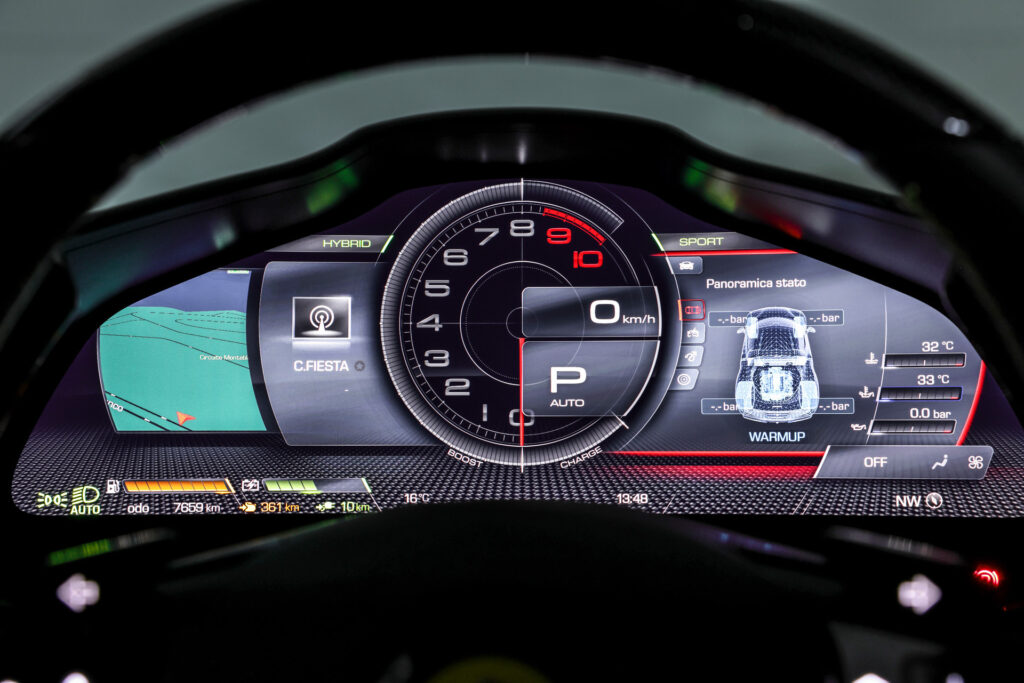
Battery pack only 7.45kWh
The car’s small lithium-ion battery pack is mounted low down behind the seats. It’s a laser welded structural container for 80 liquid-cooled cells.
Storage capacity is only 7.45kWh and it’s recharged via a Type 2 plug behind the filler flap on the left side of the car. The one on the other side looks identical, but takes 98 octane unleaded. Charging is AC-only; with such a small battery pack fast DC charging would be pointless.
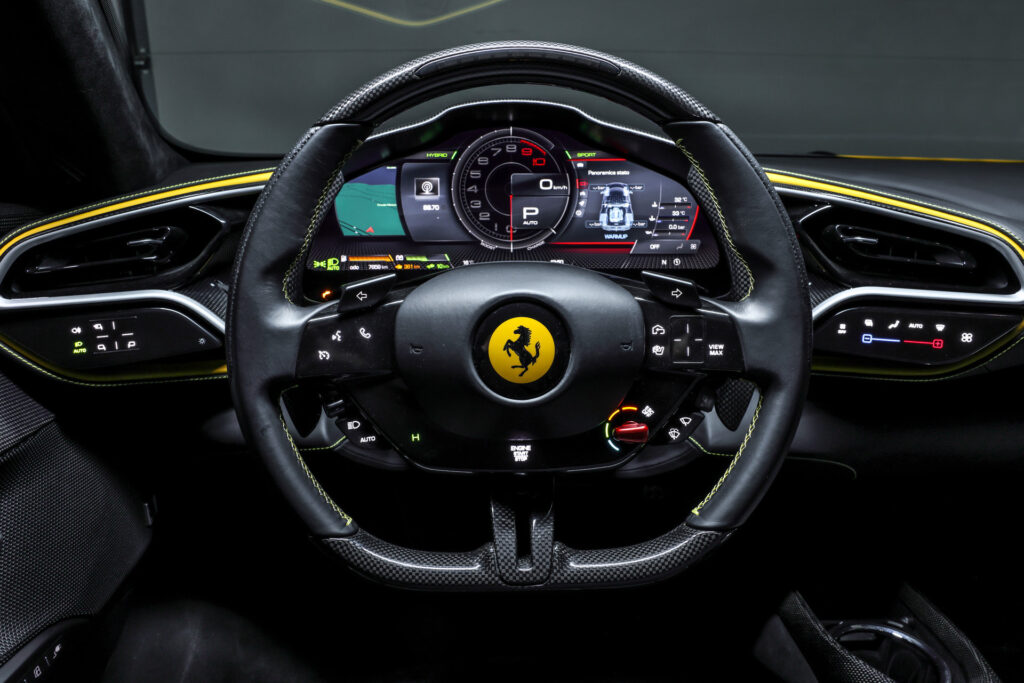
How the V6 and e-motor work together…
Depends on the powertrain mode selected by the driver. As well as the usual Ferrari manettino for driving mode selection, the steering wheel of the 296 GTB (like the SF90 Stradale’s) has a second, virtual, manettino.
These are four touch-sensitive switches. From the top down the available modes are Qualifying, Performance, Hybrid and eDrive.
Maximum combined power is only guaranteed in Qualifying, and only so long as there’s enough charge in the battery to support maximum e-motor output.
Performance manages the battery pack’s state of charge, aiming to ensure a consistently high power output. Being rear-drive, the 296 GTB’s performance is limited more by its grip than available power, so this is hardly a handicap.
Ferrari’s own figures more or less confirm this. Though the 296 GTB is more powerful than the likewise rear-drive twin-turbo V8-powered F8 Tributo, the company claims an identical 2.9-second 0-100km/h time for both. Even so, the 296 GTB can lap Ferrari’s Fiorano test track in Maranello in less time.
Hybrid is the default mode on start-up. Pressing the Ferrari’s starter button often gets you a green ‘Ready’ message in the instrument display rather than the angry sound of the V6 coming to life.

Driven in Hybrid at legal public-road speeds, the Ferrari runs electric with surprising frequency. On our test drive in southern Spain, the V6 often was silent passing through villages with 30km/h or 50km/h speed limits.
The so-called Transition Management Actuator, the system in charge of engaging and disengaging the clutch between the car’s V6 and e-motor, does a pretty much flawless job. There’s no uncouth jolting as the ICE drops out or joins in.
In this mode what the engineers call “load-point shifting” sometimes occurs. Basically, this involves harvesting a fraction of the ICE’s power to recharge the battery. The aim of this strategy is for the battery to always be ready to support a request for maximum performance.
The final mode, eDrive, is self-explanatory. Here the Ferrari runs pure electric as long as the battery can support it. Performance is relatively modest, and top speed is limited to 135km/h, same as in the SF90 Stradale.
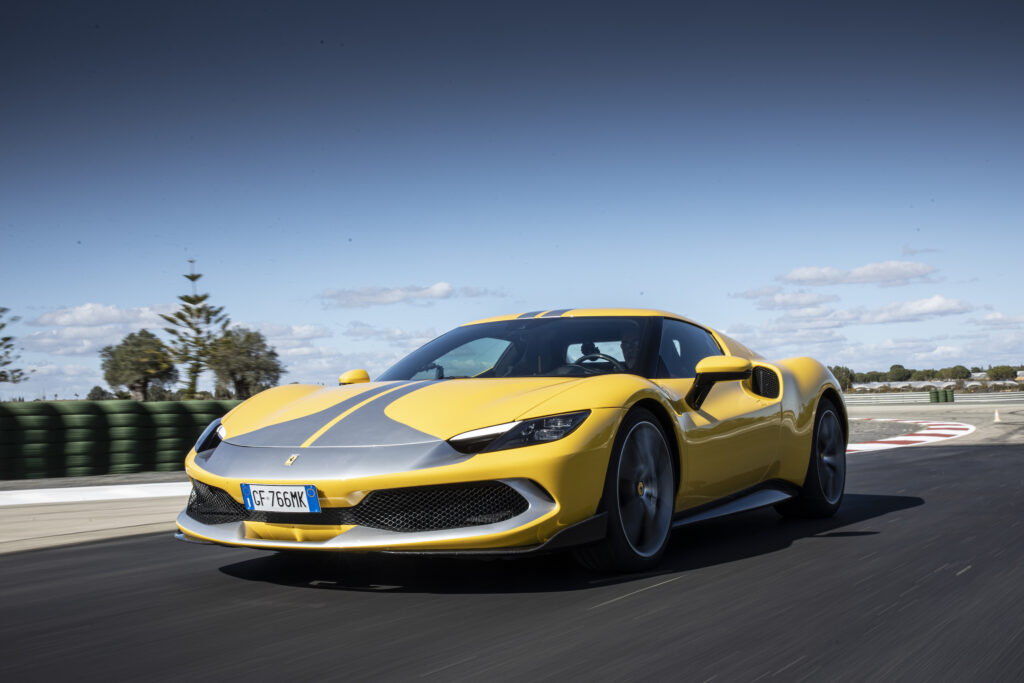
It’s the mode I choose for a couple of photographic laps of the racetrack Ferrari has hired outside Seville. It’s no real challenge for the 296 GTB to keep up with the camera car, and the smoothness of the double-clutch’s gearshifting is kind of impressive. But compared to other PHEVs, the Ferrari is rather noisy in its electric-only mode.
Ferrari engineers claim the 296 GTB is good for around 25km of city driving in eDrive. But they say the still-to-be-homologated official WLTP figure is more likely to be around 17km.
But the 296 GTB isn’t strive for eco-glory. It sets out instead to prove Ferrari’s theory of PHEVolution… and succeeds.

2022 Ferrari 296 GTB specifications
Price: $568,300
Basics: PHEV, 2 seats, 2 doors, sports car, RWD
EV Range: 17km WLTP (estimated)
Battery capacity: 7.45kWh
Battery warranty: Unknown
Energy consumption: TBA
ICE: 3.0-litre twin-turbo V6, 488kW/740Nm
E-motor: 1 rear, 122kW/315Nm
AC charging: Type 2 plug
DC charging: NA
0-100km/h: 2.9 seconds (claimed)

